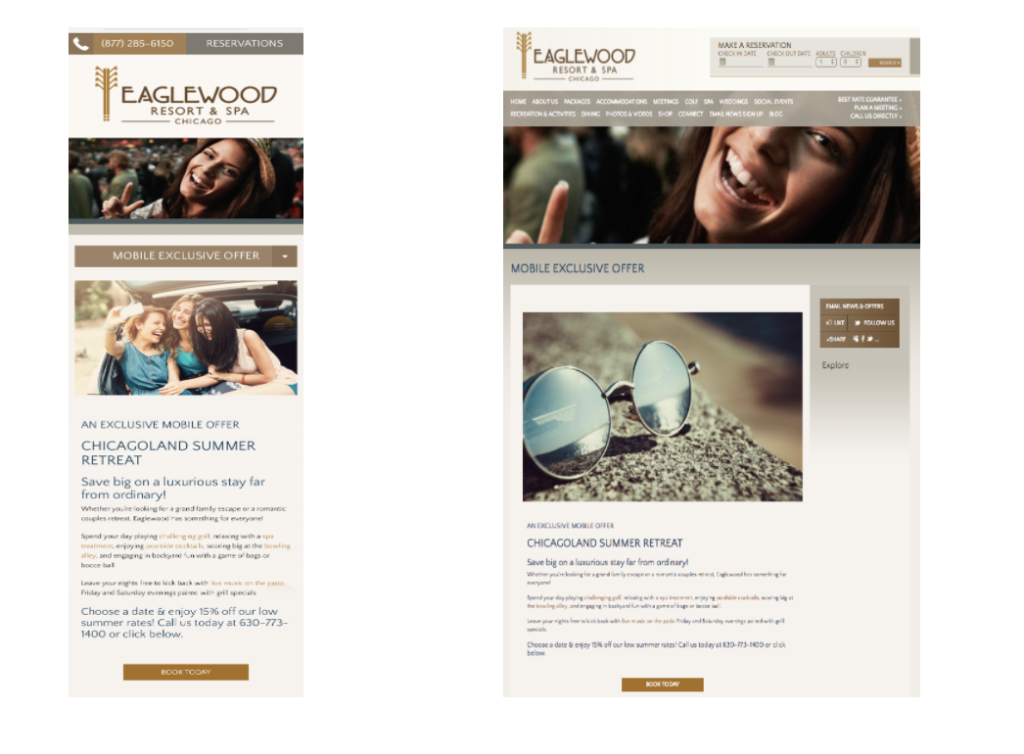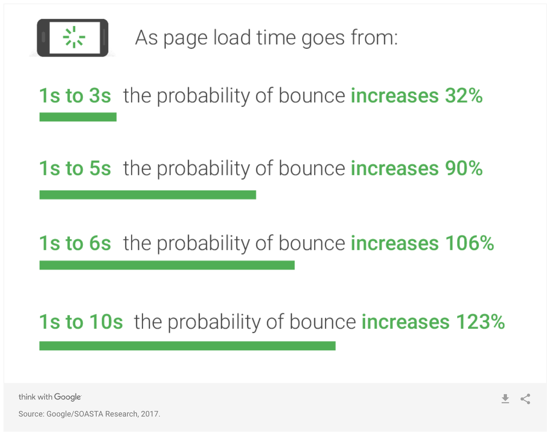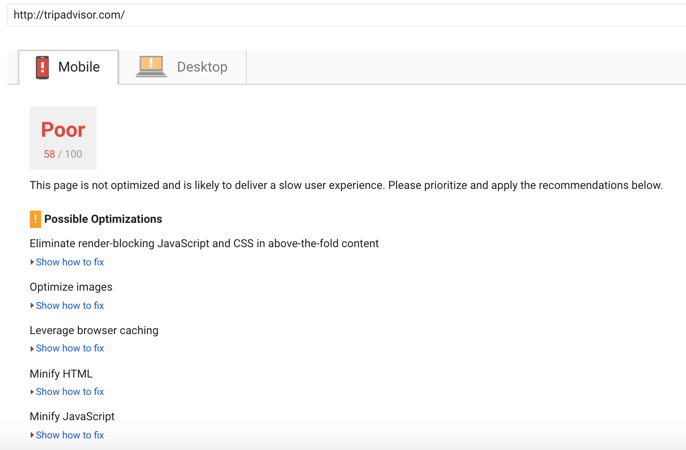
It’s no secret that mobile continues to grow in influence across all industries, especially the travel space. Effective marketing has always been contingent on showing high quality and relevant content to your customers where they are — and today, consumers are on their mobile phones more than ever.With this increase in mobile technology use and connectivity, we have come to realize that smartphones are much more than portable computers and that marketing with them requires a separate strategy.How should I decipher that separate strategy, you ask? The team at Screen Pilot recommends these four helpful steps to get you started:
- Mobile-Only Campaigns
- Mobile Exclusive Offers
- Adwords Attribution Modeling
- Mobile Site Optimizations
Mobile-Only Campaigns
To start, Screen Pilot does not believe that segmented mobile campaigns are suitable for all. It can lead to unnecessary clutter in setup, especially for properties with smaller budgets where spend (and ultimately impression share) isn’t great enough to confidently justify a need for separate campaigns.However, for significant budgets where we see larger differences in performance by device types specifically, campaign segmentation can be especially useful – both operationally and strategically. Separate campaigns provide you with the ability to control budgets by device type, create mobile-specific ad copy and ad extensions, and send these users to (hopefully!) mobile-optimized landing pages. In some cases, we also notice keyword performance differing by device type, especially unbranded keywords (e.g. “best hotels in Denver”). In those scenarios, having separate keyword lists provides greater bid flexibility that bid modifiers in combined device campaigns can not.

Example of a Google Adwords Account With Mobile-Only Campaign
- Shortened ad headlines & description lengths, with the idea that smaller screens should mean fewer characters used
- A mix of mobile CTAs (e.g. “Call now”) alongside original CTAs (“Book Today!”)
- Analysis of mobile landing page performance vs. the prior year – with a focus on conversions, conversion rates, revenue, session duration & bounce rates
- Remarketing List for Search Ad (RLSA) creation to capture users who had already visited the website
ResultsAfter 6 months we saw greatly improved results from the separate mobile campaign compared to 2016.

Mobile-Exclusive Offers
While this may seem like an obvious strategy choice, as an agency we have seen some strong performances from mobile-exclusive offers. One of the main goals here is to incentivize users who are farther into their path to purchase to convert from their smartphone.With any mobile-first digital marketing efforts you make, having a landing page that is optimized for a variety of mobile devices is the first priority. But to truly see results, the landing page should be optimized for the action a mobile user is most likely to take. The call to action should be large and clear. The ‘Book Now’ button should be big and there should be an easy to find phone number. Above all, don’t ask your website visitors to fill out a bunch of fields of information such as name, phone number, address, email or name of a company. Keep it simple.It is also important to shape the offer to your audience’s needs, in tandem with your property’s occupancy and seasonality trends. Ensure your mobile offer is truly “exclusive” to your hotel website. If the rate appears on third-party travel websites, online researchers will notice this.Eaglewood Resort & Spa’s Mobile Exclusive Offer (Summer Promotion):

Mobile View, Desktop View
AdWords Attribution Modeling
Compared to desktop, mobile is more frequently a high-funnel click in Adwords, which means a “Last Click Non-Direct (LCA) Model” is likely undervaluing your mobile performance. Screen Pilot recently shifted to a Position-Based Attribution Model (PBA), which according to Google gives 40% of the credit to both the first- and last-clicked ads and corresponding keyword, with the remaining 20% spread out across the other clicks on the path.In making this change, we are now gaining a better understanding of touch points that contribute to room night bookings – including top of funnel mobile sessions. Below you can see the difference between the LCA & PBA models for one of our clients. With the PBA, we can see an additional 1.6 conversions attributed to mobile devices and a slightly lower cost per conversion. Although these differences are relatively small right now, over time they should increase as more accurate touchpoint data is collected.

Mobile Site Optimizations
Patience wanes quickly for users on mobile devices. According to a 2017 Google study, the average time it takes to fully load a mobile landing page is 22 seconds, yet 53% of visits are abandoned if the page takes longer than 3 seconds to load. Below you can see a breakdown of how bounce rates increase as page load time increases.

Source: Think With Google

Source: PageSpeed Insights
In closing, content is king. Since mobile searches are inherently earlier in the path to purchase for booking room nights, the content your landing pages provide must hold value to these users. Overwhelming your users with language like “Book now for low rates!” consistently is not the solution. Providing high quality, high funnel content can ultimately compliment bottom-funnel activities.Improving mobile performance for your hotel or resorts PPC efforts can help you reach mobile users in the right place at the right time. These four steps are only just a few on the long list of tried and tested mobile PPC strategies. If you’d like more information about how your hotel can improve its mobile PPC strategy, let us know how we can help!Did you enjoy the read?
Get original hospitality industry insights delivered to your inbox. Sign up to receive Screen Pilot’s #TrendingNow Newsletter.





